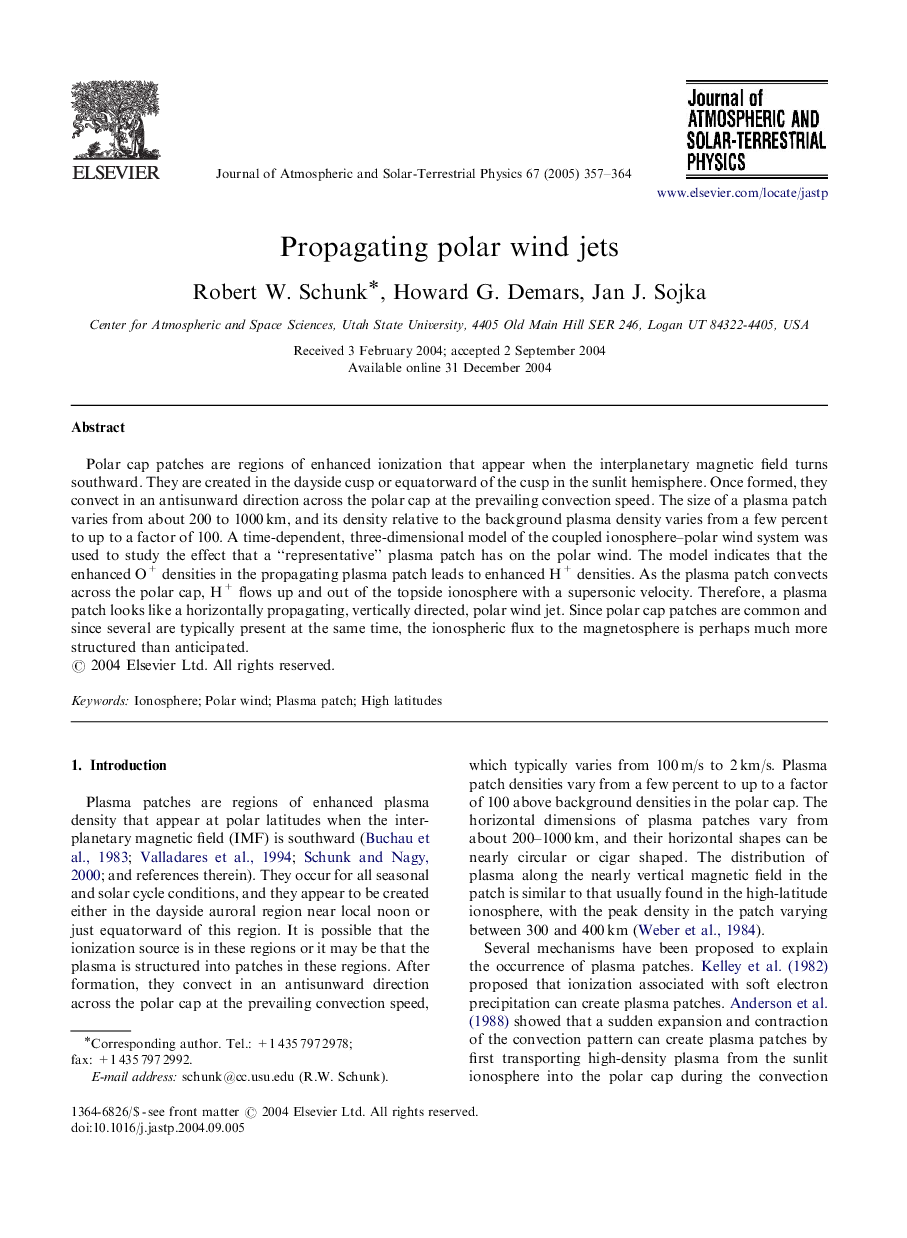| Article ID | Journal | Published Year | Pages | File Type |
|---|---|---|---|---|
| 10704209 | Journal of Atmospheric and Solar-Terrestrial Physics | 2005 | 8 Pages |
Abstract
Polar cap patches are regions of enhanced ionization that appear when the interplanetary magnetic field turns southward. They are created in the dayside cusp or equatorward of the cusp in the sunlit hemisphere. Once formed, they convect in an antisunward direction across the polar cap at the prevailing convection speed. The size of a plasma patch varies from about 200 to 1000Â km, and its density relative to the background plasma density varies from a few percent to up to a factor of 100. A time-dependent, three-dimensional model of the coupled ionosphere-polar wind system was used to study the effect that a “representative” plasma patch has on the polar wind. The model indicates that the enhanced O+ densities in the propagating plasma patch leads to enhanced H+ densities. As the plasma patch convects across the polar cap, H+ flows up and out of the topside ionosphere with a supersonic velocity. Therefore, a plasma patch looks like a horizontally propagating, vertically directed, polar wind jet. Since polar cap patches are common and since several are typically present at the same time, the ionospheric flux to the magnetosphere is perhaps much more structured than anticipated.
Keywords
Related Topics
Physical Sciences and Engineering
Earth and Planetary Sciences
Geophysics
Authors
Robert W. Schunk, Howard G. Demars, Jan J. Sojka,
